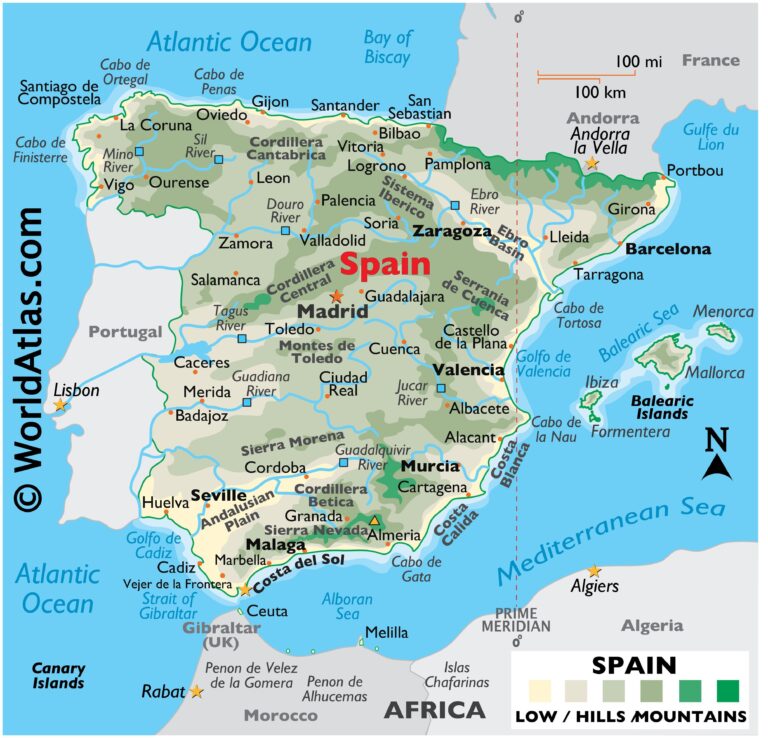Spain is positioning itself at the forefront of Europe’s energy transition, leveraging new opportunities to reshape its economic and environmental landscape. According to CaixaBank Research, the country’s emerging energy advantage stems from accelerated investments in renewable infrastructure, favorable policy frameworks, and a strategic push towards energy independence. As Spain navigates the post-pandemic recovery amidst global energy uncertainties, these developments not only promise to reduce costs and emissions but also to boost competitiveness and job creation across multiple sectors. This article explores the key insights from CaixaBank Research on how Spain’s evolving energy landscape is set to transform its future.
Spain’s Renewable Energy Boom Powers Economic Growth
Spain’s rapid adoption of renewable energy technologies is not only transforming its energy landscape but also serving as a powerful engine for economic expansion. Investments in wind, solar, and hydroelectric projects have surged, supported by favorable government policies and growing international interest. This green transition is creating thousands of jobs across multiple sectors, from manufacturing to engineering, contributing to a marked decrease in unemployment rates in key regions. Additionally, Spain’s strategic position as a renewable energy leader is attracting foreign direct investment, bolstering its economic resilience amid global market uncertainties.
Key drivers behind this growth include:
- Substantial government subsidies and incentives aimed at green infrastructure development.
- Technological innovation in energy storage and grid management systems.
- Collaboration between private sector companies and research institutions.
- Expansion of export opportunities for renewable energy components and expertise.
| Energy Source | Installed Capacity (GW) | Annual Growth Rate (%) |
|---|---|---|
| Wind | 28 | 7.5 |
| Solar | 15 | 12.3 |
| Hydroelectric | 20 | 3.1 |
As Spain continues to harness its abundant natural resources for sustainable power, the ripple effects extend beyond energy alone. The surge in renewable infrastructure is fostering advancements in related industries such as battery production and smart grid technologies, reinforcing Spain’s competitive advantage on the global stage. This momentum, paired with strong policy frameworks, positions the nation as a model for green economic development in Europe and beyond.
Challenges and Opportunities in Spain’s Energy Transition
Spain’s energy transition is marked by a delicate balancing act between accelerating renewable adoption and tackling infrastructural bottlenecks. While the country boasts abundant solar and wind resources, integrating these intermittent sources into the grid requires significant investments in energy storage and smart grid technologies. Furthermore, regulatory uncertainty and fluctuating energy prices remain obstacles for long-term project financing, underscoring the need for stable policy frameworks. Nevertheless, these challenges open avenues for innovation in grid management and cross-border energy trade, potentially enhancing Spain’s positioning as a regional clean energy hub.
Key areas defining Spain’s transition landscape include:
- Energy Infrastructure Modernization: Upgrading transmission networks to handle renewable influx.
- Investment in Technology: Boosting storage solutions such as batteries and green hydrogen.
- Policy & Regulation: Crafting clear, long-term guidelines to incentivize private sector participation.
- International Collaboration: Improving energy interconnections with Europe for grid stability.
| Aspect | Challenge | Opportunity |
|---|---|---|
| Renewable Integration | Grid instability from variability | Deployment of smart grids and AI |
| Financing | Uncertain policy affecting investments | Green bonds and ESG funds growth |
| Infrastructure | Limited cross-border capacity | Enhanced Iberian Peninsula interconnections |
Policy Recommendations to Sustain Spain’s Competitive Edge
To maintain its newfound energy advantage, Spain must focus on a multifaceted strategy that combines regulatory reform, investment in innovation, and regional collaboration. Streamlining bureaucratic procedures for renewable projects, especially wind and solar, will accelerate deployment and reduce costs. Furthermore, boosting public and private funding for green technology R&D can drive breakthroughs in energy storage and grid management, essential for integrating intermittent renewables at scale. Prioritizing cross-border energy connections within the EU will also solidify Spain’s role as a clean energy hub, leveraging its geographic position.
Policymakers should also emphasize social and economic inclusiveness to ensure broad-based support and sustainable growth. Initiatives to reskill workers in traditional energy sectors coupled with incentives for startups in the clean energy ecosystem can foster job creation. Key recommendations include:
- Tax incentives for renewable energy adoption and energy efficiency improvements
- Strategic partnerships between universities, government, and industry for technology commercialization
- Community engagement programs to promote local acceptance of renewable infrastructure
| Policy Area | Action | Expected Outcome |
|---|---|---|
| Regulatory Reform | Fast-track permitting | 50% reduction in project timelines |
| Innovation Funding | Increase R&D grants by 30% | Accelerated technology deployment |
| Workforce Development | Reskilling programs | Creation of 20,000 new green jobs |
In Conclusion
As Spain positions itself at the forefront of the global energy transition, CaixaBank Research highlights a promising new chapter in the country’s economic landscape. With strategic investments and innovative policies driving renewable energy growth, Spain is not only enhancing its energy independence but also creating a competitive advantage for the future. This shift signals significant opportunities for investors and industries alike, underscoring the nation’s evolving role as a key player in the sustainable energy arena.




